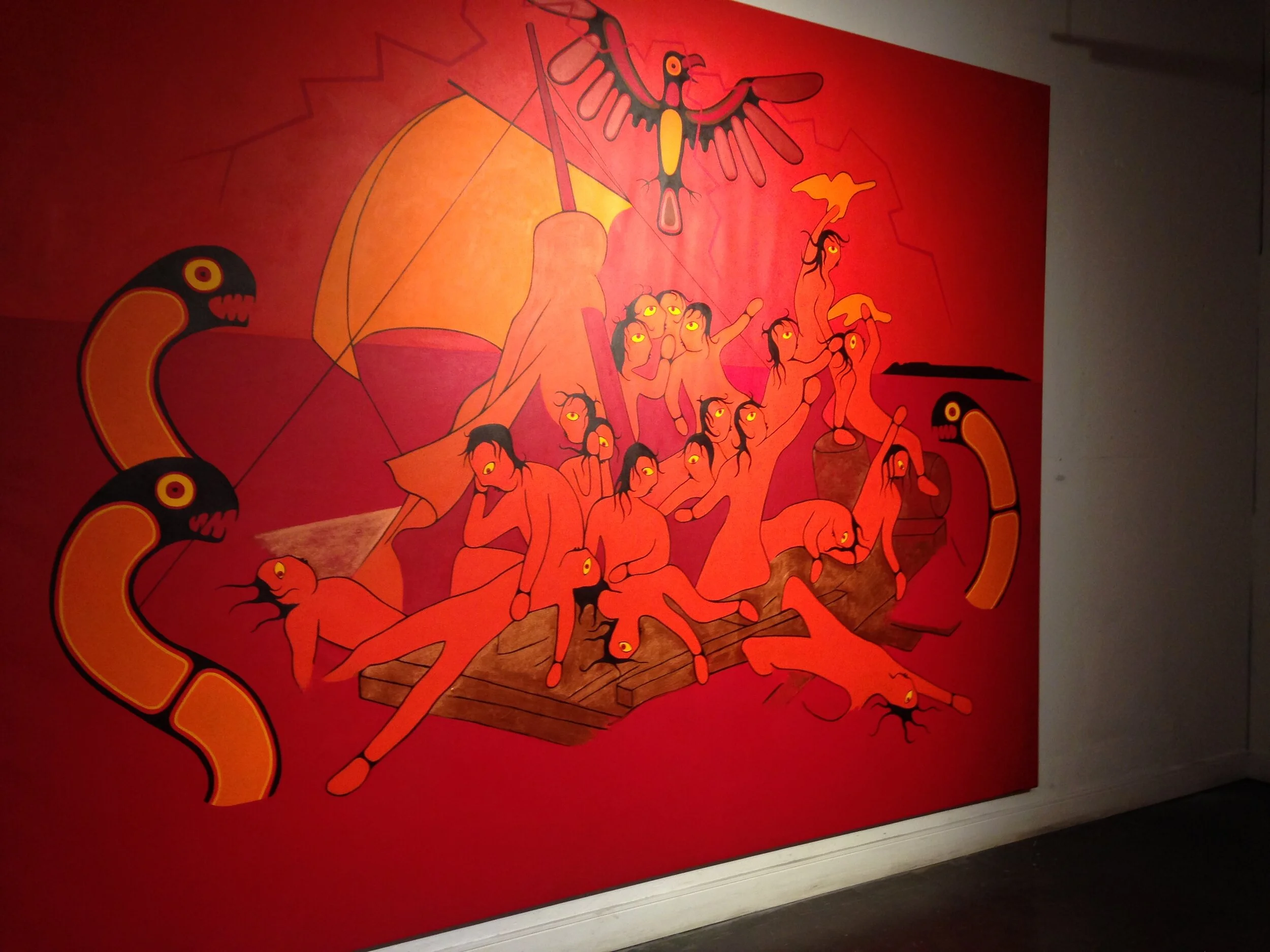Off course…
“The Time is Now, and Yesterday, and Tomorrow” by Fort William First Nation artist, Christian Chapman.
Several minutes before the sun rises over the Sleeping Giant it announces its arrival with a warm golden light. Similarly, an eerie red glow greets you before you even enter the far room at the Definitely Superior Art Gallery, emanating from Christian Chapman’s “The Time is Now, and Yesterday, and Tomorrow.”
The larger-than-life painting is RED and casts its hue on you, the viewer, as well as the white walls of the comparatively small room, as if it can barely contain itself to the confined space.
Under a blood-red sky, twenty naked, red bodies in varying states of hope, determination, terror, and despair languish on a rickety raft, partially submerged in the surrounding red sea and constantly under threat from three snake-like creatures baring their teeth at the survivors.
In case the viewer had any doubt as to the setting, the Sleeping Giant lies small in the distance, here in the upper right corner, apparently a beacon of hope for these otherwise hopeless voyagers.
The work unmistakably calls to mind “The Raft of the Medusa” completed in 1819 by the French painter Théodore Géricault. That painting was inspired by the wreck of the Medusa - a French Royal Navy frigate. An incompetent captain steered the ship off course and ran it into the ground. At least 146 set out on a hastily constructed raft that drifted for 13 days.
Géricault’s work portrays the moment when the remaining survivors see the rescue boat on the horizon and then sailed away without seeing them. A few hours later when it returned to make the rescue there were only 15 left.
Does Chapman’s work suggest that Indigenous youth are in a similar precarious condition, forced to leave behind the city of Thunder Bay at any price? Vulnerable and desperate to find safety?
Whatever the answers, Chapman chose a title for his work that suggests weariness: “The Time is Now, and Yesterday, and Tomorrow.” Indeed, the time is now - for the kind of violence and tragedy experienced by Indigenous youth (and adults) in this city to stop. But the time was also yesterday – our colonial history from beginning to now.
And Tomorrow.
Just as Géricault’s contemporary, historian Jules Michelet, said of the Romantic painting - “our whole society is aboard the raft of the Medusa” - so too is our whole community implicated and affected by those among us who are desperately searching for safety, for every member of this community. So much is depending on Chapman’s raft.
This post was first written on October 27, 2017 when this painting was on display at the Definitely Superior Art Gallery.
